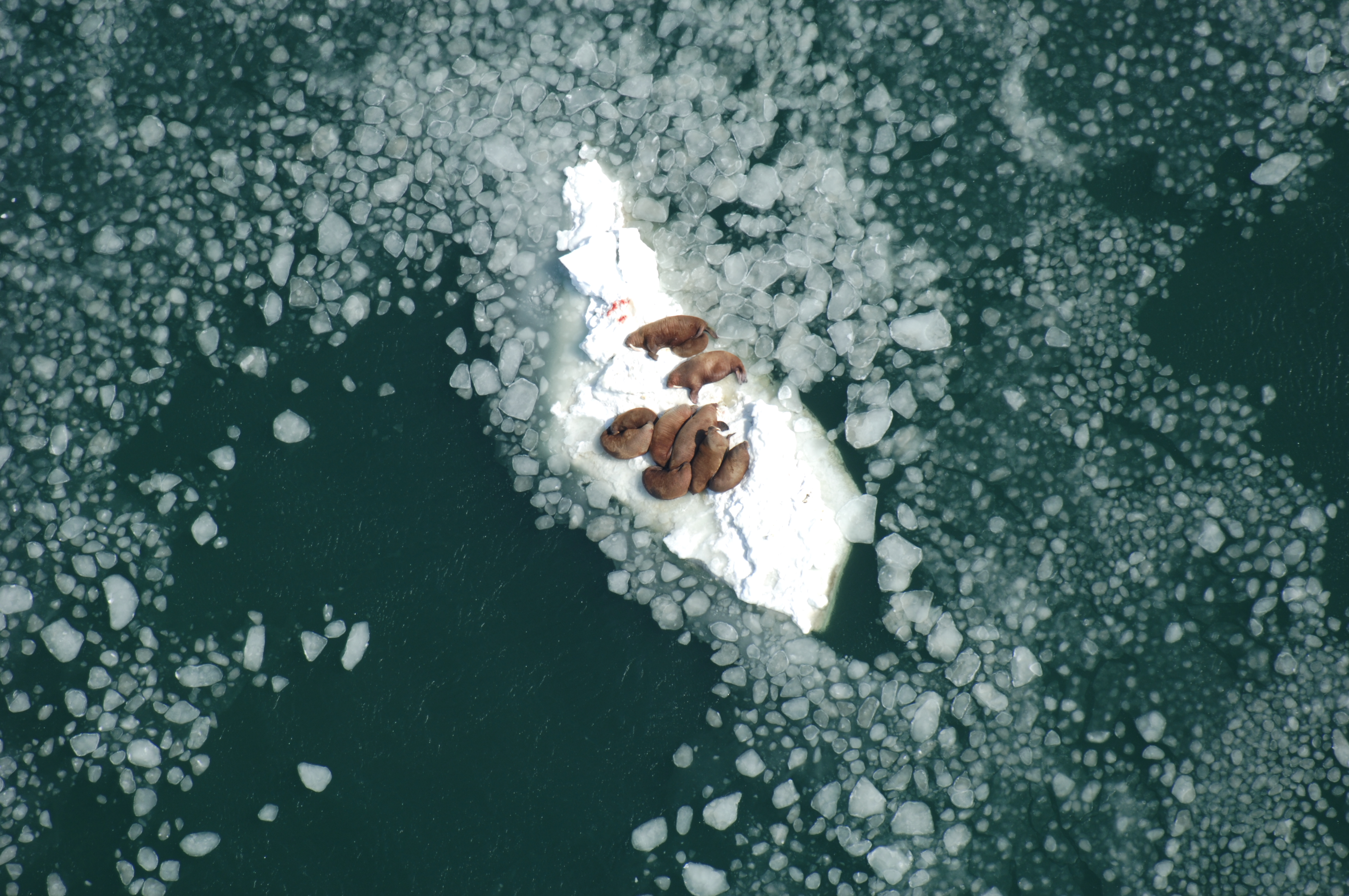The Trump administration’s explanation for failing to protect walruses is laughable
The U.S. Fish and Wildlife service once recognized that sea ice loss threatened walrus. Now it says they don’t need the ice because no one has proven that they can’t survive on land.

In 2011, the U.S. Fish and Wildlife Service concluded that shrinking sea ice coverage in the Arctic posed a threat to the survival of the Pacific walrus.
Because of climate change, walruses deserved protection under the Endangered Species Act, the agency said, which would trigger a range of actions to help preserve its habitat.
Citing higher priorities for immediate action, the agency listed the walrus as a candidate for protection, but held off acting on the measure.
But in 2017, the Trump administration proclaimed that ice coverage was no longer a problem and no special protections for walrus—rules that could limit oil and gas development—were necessary.
The Center for Biological Diversity has been in federal court since March arguing that the Trump administration has put politics ahead of science.
The center, an environmental group that petitioned for action to protect the walrus a decade ago, says “the case for listing the species has only grown stronger, with Arctic sea ice extent hitting numerous record lows; the continued disappearance of summer sea ice from the walrus’s foraging grounds in the Chukchi Sea; and new science, widely recognized as the international consensus on climate change, demonstrating the continued, dramatic loss of the walrus’s sea ice habitat through at least the end of the century.”
But the Fish and Wildlife Service says the animals “have shown an ability to adapt to sea ice loss that was not foreseen when the service last assessed the species in 2011.”
In truth, the switch has nothing to do with walruses instantly adapting to a changed physical environment in the Arctic.
It has everything do with the agency adapting to the changed political environment in which President Trump replaced President Obama.
The Pacific walrus, one of the largest flipper-footed marine mammals, is found in the shallow waters of the Bering and Chukchi seas, sometimes traveling to the Beaufort and East Siberian seas.
The animals spend winters in the Bering Sea and many females and young walruses and some males travel to the Chukchi Sea in the summer, a pattern strongly linked to sea ice distribution.
They spend much of their lives on sea ice, courting, giving birth, nursing calves and resting when they are not diving into Arctic waters, searching for food on the sea floor.
The government doesn’t dispute the trend toward reduced sea ice and admits “the most significant risk factor” for the walrus is how much more open water there will be with climate change.
An area twice the size of Texas, once reliably covered by summer ice is now open, forcing walruses to spend more time on shore in Alaska and Russia.
The animals gather in large numbers and the risk of females, juveniles and calves getting trampled is increasing because of overcrowded conditions.
The walrus population is uncertain, with the Fish and Wildlife Service tentatively estimating a range between 90,000 and 480,000.
In 2012, the United States Geological Survey said polar bears and walruses “are dependent on sea ice over the continental shelves of the Arctic Ocean’s marginal seas.”
The researchers said “walruses use sea ice as a resting platform between dives to forage for clams and other bottom-dwelling invertebrates.”
Echoing those findings, the environmental group says in court that “walruses require sea ice as a platform for resting between foraging trips to the sea floor, courtship, giving birth, nursing calves, completing their molt, and as passive transport to new foraging areas.”
But Justice Department lawyers now make the claim that walruses can get by without sea ice, contradicting research by scientists within the Department of Interior.
How does the Trump administration justify this claim?
Because no one has demonstrated whether or not Pacific walruses “can give birth, conduct their nursing during immediate post-natal care period, or complete courtship on land.”
This is laughable.
As the walrus lawsuit proceeds, the Trump administration will need a better argument than unproven declarations that the animals don’t need sea ice because no one has proven that they can’t survive on land.
Dermot Cole can be reached at [email protected].
The views expressed here are the writer’s and are not necessarily endorsed by ArcticToday, which welcomes a broad range of viewpoints. To submit a piece for consideration, email commentary (at) arctictoday.com.